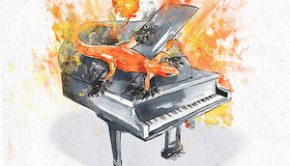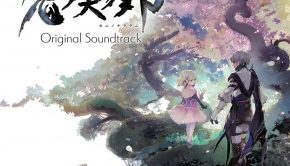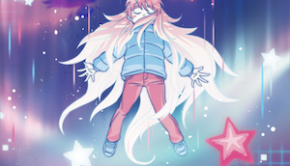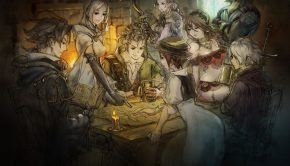Lena Raine Interview: Mountain Climbing
Lena Raine has made a splash with her soundtrack to Celeste, a 2D platformer that packs a surprising emotional punch. While the game has been receiving all kinds of enthusiastic responses, the soundtrack has also been met with an incredibly warm welcome from fans and critics alike for its powerful effect on the game – and on its listeners.
In this interview, Lena Raine discusses her rise in the games industry through her work on Guild Wars, and her more recent work on the Celeste, which has been receiving fan and critical acclaim since its recent release. Raine describes her approach to the score, her inspiration for the B-Sides album, and the various challenges that she encountered while composing for a game that isn’t afraid to tackle complex emotional and mental struggles head-on.
Interview Credits
Interview Subject: Lena Raine
Interviewer: Emily McMillan
Editor: Emily McMillan
Coordination: Emily McMillan, Lena Raine
Interview Content
Emily: How did you get into music, and into soundtrack composition?
Raine: Music has been a big part of my life since I was a kid; I grew up in choirs, and learned theory and sight-reading from a super young age; so, music’s always been a part of my life, but I also grew up playing video games, and idolizing those soundtracks. I went to college for music, and got a four-year degree, and straight out of college really wanted to get into doing music for games.
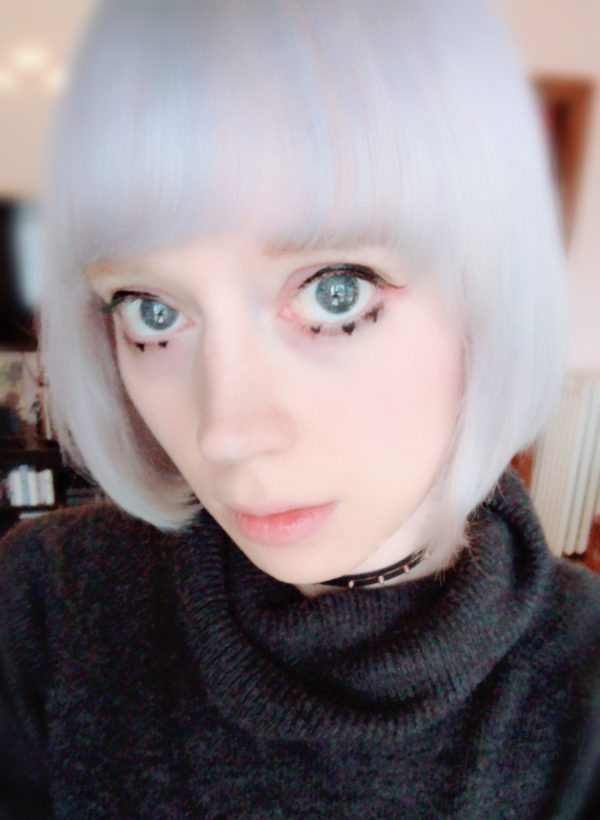
It didn’t work out at first, because – well, lots of big companies aren’t interesting in giving the time of day to someone right out of college! [laughs] But I stuck with it, and kept writing things, and got a day job in the industry so I could learn more about how video games were made, and how they were produced. I did a lot of testing, a lot of certification testing, at Nintendo and Warner Brothers, and eventually landed at ArenaNet, which does the Guild Wars series. Through there, I applied for a design position, because I thought I could do that – and ended up getting hired. So I was doing design for Guild Wars for the longest time, and they let me loose on some post-release content – I designed this little mini-game for a holiday festival. It was like Guitar Hero for bell choir. It now comes around every year for the Wintersday Festival that they put on.
So there was all this wonderful Guild Wars music, which was written by Jeremy Soule. So I decided to do some arrangements of his tracks – but there’s no real holiday music for Guild Wars. I was looking back through his work for Guild Wars 1, and it was all mostly plays off of traditional Christmas carols, but there was nothing uniquely Guild Wars Christmas music. I thought, maybe I should write my own pieces, to establish some of the carols that would be in this world. Then the audio team found out, and realized I wrote music, and I got in touch with Maclaine [Diemer], who’d taken over after Jeremy post-release. He’d noticed my music, and I got to talking with him, and told him my idea of doing a Guild Wars orchestral version of one of the carols I wrote, and he told me to go ahead with it. I played it for the audio team, and they showed it to the cinematics team, and they decided to put it in the trailer. So they put my music in the trailer!
Suddenly, my music was a part of Guild Wars, and they kept asking me to write more stuff. I was a part of the design team, but also being allowed to write music, which put me in a really cool position. I was able to design content, but also write music for it as well, which led into some cool stuff. I was able to design content, but also write music for it as well. I was designing boss encounters, and then writing multi-stage battle music to accompany it.
Emily: It’s not often that composers get that kind of control over the content that they’re writing for.
Raine: Oh, yeah – it was definitely just having the right circumstances coming together that allowed me to do that.
Emily: Did you have a favorite encounter with accompanying music that you got to do?
Raine: Absolutely, and I think it’s one of those pieces that Guild Wars fans go nuts over. It’s called Battle on the Breachmaker. It’s this climactic battle with this villain that had been peppered through the story of post-release Guild Wars 2 for like a year at this point, and she finally revealed herself on this giant drill-platform thing, and everyone got to band together in this map-wide raid to take her down. For this battle, I designed the encounter, and then I wrote the music for all of the phases for it. It resonated with fans a lot – it was a temporary thing, and only happened for the month period that that content was happening. It sucks, because you can’t go back and play it now. People have really fond memories of that encounter, and the way that the music played into that was pretty impactful – enough so that they brought that music back! After I left ArenaNet, they told me about this dungeon boss where they wanted to use the same multi-phase battle music – so they brought it back, and now it’s a permanent part of the game. On YouTube and Soundcloud and stuff, the track’s got this ridiculous numbers of people who have watched it. I’ve had people tell me that they put the track on loop for hours for the D&D campaigns!
Emily: Moving onto Celeste, can you tell me about how you got into that project?
Raine: So I’ve been trying to get into the indie community a bit. When I was still at ArenaNet, I wanted to do more of my own music for soundtracks – not just for Guild Wars. Through some friends of mine, my music was passed along to Matt and the team – although the company is called Matt Makes Games, it’s a whole bunch of people – not just Matt!
Emily: Matt and company!
Raine: Yes! So my friend passed me along to Matt and company, and Matt reached out to me and asked me if I wanted to make the music for the game. At the time, I had no idea what the scope of the game was going to be. They had a demo of the first level, and it looked like a cute platformer, so I said I’d write some cute platform music, and it’d be a nice break from the big, epic, orchestral stuff. Then, as things went along, the game’s emotional scope revealed itself, and things just went from there.
Emily: So at that stage, it sounds like it sounded to you like a – well, a cute platformer, like you said. Do you know if they had the emotional weight of the game planned from the beginning, or was that something that developed as it went along?
Raine: Their goals from the outset was to make a game about overcoming a challenge of climbing a mountain. They based their game on the Pico-8 version, which they did first, and that was a three-day game jam sort of thing, where they just showed the mechanics and the visuals. It got popular with speedrunners in particular, so they decided to make a full-fledged version out of that. So that was the goal from the outset – to make a game about climbing a mountain – but as development went on, they realized that climbing a mountain was a serious thing, and that would reflect what the climber was bringing to the experience as well. So they wanted to have that character-based narrative to it, but everyone was kind of feeling it out and bringing the emotional experience to it as we developed the game.
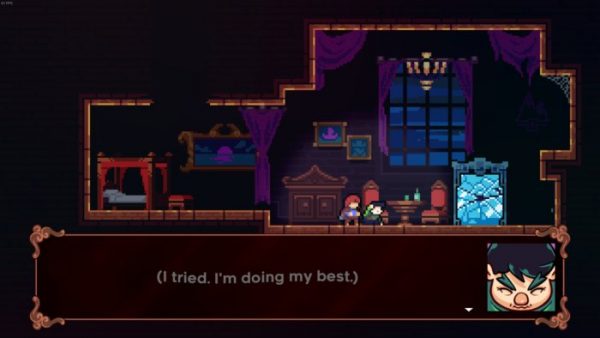
I joined super early on into production, and six months in they had the first two levels put together but not finalized, and things started revealing themselves once they started writing music for the second area, where you have your first encounter with the other Part of You – which we internally call “Badeline” – riding that, that’s where I started getting emotional with the music. It’s creepy, there’s this part of yourself that’s coming out and giving you hell – clearly something personal is happening. And then at the end of that level, you get this phone call from someone in the dream – someone from Madeline’s past, there’s clearly some emotional baggage here, and she’s clearly trying to process something – we don’t know what that thing is, but I was scoring that part specifically and doing this super minimalist approach to up the ominous part of it.
That feeling you get when you’re suddenly confronted with something that you’re not prepared to deal with – that was when I decided, okay, this was going to have some emotions to it, and I hope that the rest of the levels continue to build off of it. I think Matt and the team saw that coming from me as well; during production, Matt had told me that he had changed how the gravity of some of the scenes was presented, so it was definitely a back-and-forth thing as the game developed.
Emily: The second level was pretty powerful, when you have all of those copies chasing you as you’re running through the platforms and the music is growing. I know every level has that adaptive music approach, but that level in particular was so interesting.
Raine: Yeah, and I think that level in particular, from the reception I’ve gotten, has been one that people have seen as very epic, and having a lot of parts to it.
Emily: Another section that stood out to me musically is at the very beginning, when you’re crossing that bridge for the first time and the music swells – it’s a very unexpected moment.
Raine: So that was an interesting thing – when I came onto the project, Matt had initially written temp tracks for the first and second levels. He does music as well. He had put in that queue – that uptick in intensity. It was very different musically, but it had that same swell you’re descripting. He had scripted it into the level, and it was something I wanted to keep. It was probably the second thing I ended up writing for the game. I wrote the first level, Forsaken City, just to get the theme for the game going – in a kind of Mario 1-1 style. Then I went back to the prologue to look at how I was going to build on that. That also told me that we could do fun things with dynamic music in the game.
Emily: You’d said in another interview that you had written a lot of the music before some levels had been created or finalized – were there any levels that saw big changes in the music from the time you wrote it to the time the level was completed?
Raine: Yeah – towards the end, the penultimate level, called “Reflection” – I think that one went through the most changes during development, because it’s the climax of the game. It’s where all the emotions are at their peak, and for that level specifically, it went through a number of changes – both on the gameplay side, and on the pacing/emotional side. When Matt pitched the level to me, it was going to primarily be a boss fight level, so I approached that first, wanting to build a super epic battle theme. But then there were so many scenes that were leading up to the battle, so I needed to write something else, for the lead-up. Initially it was an underwater level, so I wrote some music with underwater vibes, but also trying to build up towards that boss fight – encouraging the player, and so on. That is actually want plays just before the final battle – the piece with the drum beat, and so on.
But then two things happened with that level. One, it wasn’t a water level anymore! [laughs] There is still water as a part of it, but it’s not really a water level. It also became a lot longer than I was expecting, and the music was starting to get super repetitive. Also, the emotional impact of the scene that happens just before this level really changed the way I approached the music. You get this super crazy emotional scene with the other self, and then the music just cuts out entirely, and picks back up when you’re back in the gameplay. It felt very weird to just kick it back into high gear with drums and arpeggios and stuff.
There was a moment where I decided, okay, I need to pair this back, and break down this piece into its bare minimum parts, and build from there. So I ended up deconstructing the piece, writing the first low-intensity layer for that – when you are actually in the water – and then as you progress through the level, it builds more and more until you get to that congregation though.
Emily: And then for that final level, you’ve got this massive medley of themes from the game. I think I saw you mention Final Fantasy VI before as an example of a game that does massive thematic medleys really well. When did you decide to have that as your closing level theme?
Raine: From the moment Matt said that the level would be a gameplay medley. That was always part of the concept – the final challenge will be testing everything you’ve learned in the gameplay of the previous game = very classic game design. There was no way I wasn’t going to do a medley! You can’t just build a piece of music that’s completely unrelated to the areas you’re referencing.
I was very intimidated at first. There were so many areas that we’re referencing – you start in a reference to the sixth area, and you go through one, two, three, four, and five – and then the seventh area, which is the final ascent. And I thought, how am I going to write a piece of music that goes through seven different iterations? It took me forever to write that track – multiple months – because I was constantly challenging and second-guessing myself the entire time.
I was also going through this huge move, coming back from Montreal and looking for an apartment, and I was going through my own strife, and trying to overcome that. It wasn’t until I actually found an apartment and was feeling hopeful myself that I finally thought, “okay, I can do this. I found an apartment, I can do life” – it profoundly impacted my ability to write. It got me over the hurdle of this track. I started taking iconic moments of each track – I didn’t have to redo everything from every layer, but I could create custom mixes based on the elements I wanted to bring out. I could bring out one style of drumbeat from Forsaken City, or the rising arpeggio from the Old Site. I kept using all the different synth or drum sample or percussion that I had used in those tracks – but kept building on them, and making different mixes as the character goes up the mountain.
Emily: Although it looks like a simple retro platformer on the surface, Celeste is hugely personal and metaphorical. How did that factor into your approach to the soundtrack?
Raine: I think all of us who worked in the game brought our own internal struggles, which are reflected in the art, the level design, the story, and the music. It’s a reflection of all of our stories coming together into that. I suffer from anxiety and depression as well, and I very much identified with Madeline as a character, and I saw the music as an opportunity – in the same way that the narrative was doing its job of conveying what anxiety and depression feel like to a character from a dialogue perspective, or a gameplay perspective – I wanted to bring my own perspective into the music.
For one specific example, the track “Anxiety” is – well, a very literally named track! [laughs] It’s played during what became one of the more poignant moments for me, which is this gondola sequence, where Madeline has a panic attack and needs to calm down. The gameplay was so evocative, and I tried to write the musical expression of what an anxiety attack feels like. Using the metaphor of the feather in the music itself – a simple dynamic layering technique. Here’s this little piano line that you’re trying to hold onto, that’s what you want to here. But then there are these big, fucking synths that are just overwhelming you – they’re mixed way louder than they should be – I wanted to engulf you in sound. The piano is completely gone, and every other sound you want to hear is just pushed away. And then you do the minigame, focusing on the breathing and the feather, and you can finally hear the piano again. For me, that was that personal reflection of going into an anxiety spiral, and trying your best to come out on the other side.
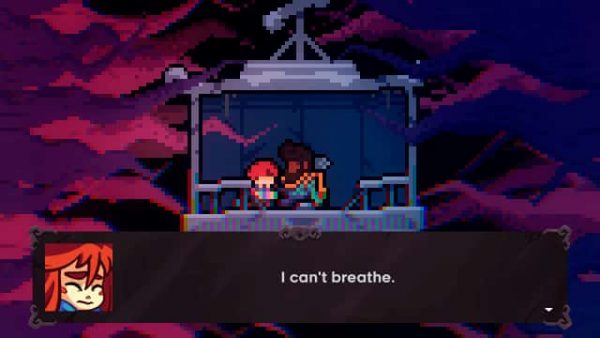
When I heard that played, seeing all the special effects that went with it – I knew we got it. I thought, this was extremely like what I feel. It was so good to see that all come together, and nail that experience.
Emily: It seems to me that it would be difficult to try and capture those emotions while still creating a soundtrack that people keep returning to and wanting to listen to. You want people to listen to the soundtrack while still pushing them out of their comfort zone at parts.
Raine: Yeah, for sure. I wanted to make it an enjoyable soundtrack but I also wanted to challenge the listeners in some regards to really feel disconcerted by the music at times. To not do that would be a disservice too, to the narrative of the game and to what it’s trying to say.
Emily: The game is also incredibly challenging from a gameplay perspective. At what point did you realize that the game was going to be insanely difficult, and that people were going to be listening to music for any one level for a very long period of time?
Raine: Pretty much from the get-go! I knew Matt’s pedigree in games, and I knew that prior to TowerFall, he’d worked on some of the most excruciatingly challenging games – to the point where a lot of people don’t actually realize that he was kind of the predecessor to Super Meat Boy in a lot of ways – he did games like Jumper way long ago. I knew his style, and I knew that he was going to be challenging people.
That was definitely a thing that also challenged me to write music that was going to be looping for a long time, but also needed to freshen itself up every now and again, which is why I think we really leaned heavily on the dynamic music aspect of certain levels, because you get that feeling of satisfaction when you progress successfully through a series of challenges. The benefit of having dynamic music for that kind of experience is that you can reward yourself not just for reaching the end of concrete levels in the game, but for hearing changes of music, and understanding that you’ve progressed to a certain point – you know that because you’re hearing something new.
But then each individual piece needed to not get tiresome, either. I used a lot of my own style, which verges on the minimalist side of things, using as few instruments as possible, and simple motifs and melodies. I want to make things iconic and repeatable without getting hard on the ear. Using easy-to-digest chord progressions, things that are more common – ambient music, trance – where you can listen to the track for twenty minutes straight without any problem. That’s also kind of went for the B-Sides levels – I went in the trance-deep house direction, because this was one of the longest and hardest sections of the game, so the music needed to be something that keeps you going, something that you wouldn’t get sick of listening to.
Bringing these elements together to create a cohesive soundtrack that also didn’t get super aggravating – that was a part of my goal.
Emily: Can you tell me a little bit more about how you approached the B-Sides?
Raine: Absolutely! It was an idea that came about actually purely from the naming scheme on those remix levels – initially when Matt was planning out the levels, they wanted to put all the harder ideas for the gameplay into these remix levels – which is what they called them. I was already going to be writing a ton of music for the regular game – I would want each remix level to have its own remix track, but I didn’t have the time. So I thought, why don’t I reach out to people I admire and respect and ask them to do their own remixes? I didn’t expect to get such a universal “yes” from everyone. Pretty much everyone I reached out to, I know on some level – we’re friends, or we’ve connected on Twitter before. They’re all also people whose music I love, and people who I’ve always wanted to work with, so I wanted to get them involved in the game. Some of them are industry veterans, like Ben Prunty, who did FTL, or Jukio, who did Nuclear Throne, and also some up-and-comers, or people who haven’t been able to do a lot of game music, but have had a lot of success with their own.
In Love With a Ghost was one that my girlfriend actually introduced me to their music from Spotify, and I followed them on Twitter and got a casual exchange going. I finally reached out to them, because their music is amazing, and all framed around fake video games, so I figured they’d be interested. I reached out, thinking they’d not give me the time of the day – but when I asked, they said, “Hell yes!” and I found out that they’d been wanting to do game soundtracks for a while. They’re the sweetest person in the world, as it turned out, and they worked on this track, which turned into a more original track inspired by the level it was for.
So it was a fun experience, reaching out to a wide variety of folks, saying “here’s the track that I wrote, here’s the level that it’s part of – do something cool.” I wanted to give them total freedom to just express themselves – if they wanted to do a straight remix, fine – if they wanted to do something inspired by the level, fine – as long as it’s something they were proud of. I think that really shows in a lot of the remixes. When I was hearing them, I was so happy with how they all turned out.
Emily: You mentioned other composers that you looked up to or are inspired by – what are you listening to right now?
Raine: Well, goodness. I have a ton of composers and songwriters that are kind of my go-to in games. A lot of it’s centered around Japanese composers from the 90s – I played a lot of RPGs growing up, so kind of from that generation. Yasunori Mitsuda, Yoko Shimomura, Shoji Merugo, and more recently Keiichi Okabe – those are sort of my holy grail composers for emotional music that’s informed by a cross-section of live instruments, some folk music, synths, and bringing more than just a Hollywood emulation. That’s what I love about video game soundtracks – the variety of influences that get brought to it.
Outside of games, I love Ólafur Arnalds, Janelle Monet, Imogen Heap, Wednesday Campanella, who is this Japanese pop group that’s getting pretty popular, even in the US. They’ve got a very playful style.
Emily: Can you tell me about the recent announcement regarding possible Celeste sheet music?
Raine: I really wanted to work with Trevor because I came across his Chrono Trigger piano collections album when it came out, and I was blown away. I listen to a ton of piano arrangements for games, and a lot of them are kind of – nice piano rendition, you know – but Trevor went into the Chrono Trigger soundtrack and just found the essence of the soundtrack. His take on “Black Omen” especially, which is a cool track in Chrono Trigger, he did all this prepared piano, really getting to the physicality of the instruments. I listened to it, and I just thought, he gets it, he understands how to write piano arrangements. He was on my bucket list of people to work with.
So Sebastian reached out to me when Celeste launched, and asked if he wanted to work with me on something. He’s very passionate about sheet music, and providing sheet music books, to people who want to learn how to play music through games, or from games. So he reached out to me, and we had coffee and talked about possibilities, and asked me who I wanted to work with, and I immediately said Trevor.
Trevor had actually, independently of any of this, downloaded Celeste the same day that Sebastian emailed him about the possibility of doing a Celeste project. So he was very interested, and we had a conversation, discussed where we wanted to take things, and just went from there. We’ll definitely be doing an album and sheet music book – we’ll be announcing things when it’s ready! It’ll be a little bit, but we’ll definitely be seeing something this year.
Emily: Is there anything else you’d like to share about your work on Celeste, or your work in general?
Raine: Yeah, I’ve been completely in love with the response people have had to Celeste. I’ve had all of these heartfelt emails and messages on Bandcamp – it’s been such a positive, humanity-affirming experience, seeing people responding to this in such an earnest way. I was losing a lot of hope in the gaming industry around the time of Celeste’s release. I was hoping it did well, and that people would like it, and seeing the response has warmed my heart so much, and made me think – we can do this, we can make a game that has an emotional impact without people getting really angry at us for doing it. It’s possible to put something heartfelt and earnest out there, and see a positive response for it.
As far as my own projects, I’ve got a number of things that I’m working on. Some I can’t talk about, but the next thing I’ll be releasing is a game I’m making myself called ESC, which is an interactive novel – since outside of music, I’m also a writer. I’m working with the artist named Data Erase, who does a lot of pixel glitch art, and 2 Mello, who did one of the B-Side remixes, and Read Only Memories – he’s doing some sound design for me, and I’m doing the music and programming this elaborate thing – I had no idea I could even do it. I’m hoping to release it in the next couple of months, and will release the soundtrack. Hopefully it’ll be a cool narrative adventure for people to read through.
Emily: Thank you so much for chatting with us!
Raine: Thank you!
Posted on February 5, 2018 by Emily McMillan. Last modified on February 6, 2018.

